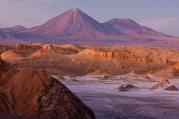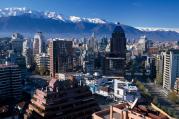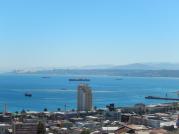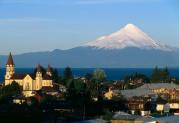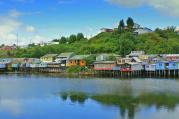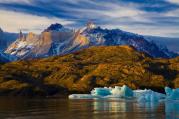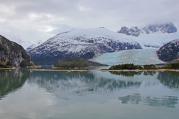Country Information Chile
| Location |
| |
In the North Chile borders on Peru, in the East on Bolivia and Argentina and in the South and West on the Pacific Ocean. The coastline of this country measures more than 4200 km, while the average breadth of the country measures only 180 km (total area approx. 750.000km2). To Chile also belongs some Antarctic territory, as well as the Juan Fernández Islands and the Easter Island located in the Pacific Ocean. |
| Population |
| |
Approx. 17.6 million |
| Capital |
| |
Santiago de Chile, population 8 mio. |
| Politics & Economy |
| |
Chile is a presidential republic. The country is one of the leading industry nations and one of the leading producers of raw materials within Latin America. Chile disposes of the biggest copper deposits of the world; moreover, it extracts oil and gas. Chilean wines are well-known worldwide. In Tierra del Fuego and Patagonia the breeding of sheep is widespread and besides the country has one of the biggest fishing industries of South America. |
| Currency |
| |
Chilean Peso (CLP $)
|
| Time Difference |
| |
Continental: -4 hours GMT / Easter Island: -6 hours GMT /
Punta Arenas: UTC/GMT -3 |
| Voltage |
| |
220 alternating voltage, it is recommendable to bring a multi-adapter |
| Public Holidays |
| |
1. January, Easter & Holy Week, 1. and 21. May, 29. June, 16. July; 15. August, 18. and 19. September, 12. and 31. October, 1. November, 8. and 25. December |
| Opening hours |
| |
Most of the shops open from 10:00 to 20:00h, shopping centers and malls are often opened during the weekends until 21:00h or 22:0h. Banks are generally opened from 9:00h to 14:00h. |
| Climate |
| |
Summer lasts from October to March, winter from June to August. The country has quite different climatic zones in consequence of its length – from the desert regions in the North to the very cold zones in the South temperatures decrease steadily. In the centre of the country and in Santiago it is rather temperate during the whole year, whereas you have long winters and cool summers in the South. The North is warm and dry. |
| Best time to travel |
| |
High season are the Chilean holiday months from January till February. Best travel time to Patagonia is from October till April; to Easter Island from September to May and in the North the nice weather conditions allow to travel all year-round. |
| Clothing |
| |
Generally, tourists you should be prepared for the different climatic zones and thermal oscillation between day and night; besides light summer clothes you should bring regular outdoor wear like warm pullover and waterproof jacket. |
| Tourist Destinations |
| |
| Santiago |
Capital with European atmosphere, dynamic and cosmopolitan.
|
| Valparaíso |
picturesque city on the hills with elevators, biggest port of Chile
|
|
Atacama desert
|
most arid desert in the world, salt lake, geysers
|
|
Puerto Varas
|
lakeland district, volcano Osorno
|
|
Punta Arenas
|
city at the end of the world, at the Magellan street
|
|
Torres del Paine
|
most beautiful national park of Patagonia
|
|
| Flora & Fauna |
| |
Corresponding to the large extension of the country, you have many different vegetation zones within Chile. From desert and thorn bush steppe with cactus in the North, forests and up to evergreen coniferous forests and grass steppe in the extreme South you can explore every kind of vegetation. Concerning the wildlife you can meet lama, alpacas, puma, Magellan foxes, chinchillas and the very rare south Andes deer (Huemul), the heraldic animal of Chile. Moreover the variety of birds is tremendous. |
| Food & Drink |
| |
Empanadas (fried pastry pockets with diverse fillings), stews like Cazuela or Humitas filled with maize pudding are always delicious. Other favourites of the Chilean cuisine are sea-food and fresh fish. The Chilean red and white wines are excellent and gained international reputation. Pisco Sour, a cocktail mixed with brandy, is Chile’s national drink. |
| Souvenirs |
| |
Lapis lazuli, silver, bronze, copper and leather are the most important materials for the craft industry. Nice silver Indian jewellery or pieces made of lapis lazuli can be bought. Also gloriously colourful traditional costumes of Chilean cowboys and woven goods from Rari and Valdivia are highly in demand. The traditional markets (e.g. Los Dominicos in Santiago or La Recova in La Serena) offer ponchos and other products made of lama and alpaca wool. |


